
Buffaloberry Patch
2018 Upland Game Seasons Summarized

Ring-necked rooster.
North Dakota's 2018 pheasant and sharp-tailed grouse harvests were similar to 2017, while the number of Hungarian partridge taken last year was down from the year before, according to state Game and Fish Department statistics.
More than 58,200 pheasant hunters harvested 327,000 roosters (up 6 percent) in 2018, compared to 58,300 hunters and 309,400 roosters in 2017.
Counties with the highest percentage of pheasants taken by resident hunters last year were Williams, 6.7; McLean, 6.5; Richland, 6; Morton, 5.6; and Divide, 5.2.
Top counties for nonresident hunters were Hettinger, 13.6 percent; Bowman, 10.4; Divide, 7.6; Dickey, 5.9; and Emmons, 4.8.
In 2018, nearly 13,100 grouse hunters (down 4 percent) harvested 45,600 sharp-tailed grouse (down 3 percent). In 2017, 13,600 hunters took 46,900 sharptails.
Counties with the highest percentage of sharptails taken by resident hunters in 2018 were Slope, 6.5; Walsh, 5.5; Mountrail, 5.4; Kidder, 5.3; and Benson, 4.6.
Top counties for nonresident hunters were Bowman, 11.3; Hettinger, 7.4; Divide, 7; Mountrail, 6.8; and Ward, 6.4.
Last year, 11,200 hunters (down 19 percent) harvested 23,000 Hungarian partridge (down 30 percent). In 2017, nearly 13,800 hunters harvested 32,800 Huns.
Counties with the highest percentage of Huns taken by resident hunters in 2018 were Williams, 15.1; Mountrail, 12.1; Logan, 7.3; Ward, 6.5; and Burke, 5.9. Top counties for nonresident hunters were Divide, 10.3; McLean, 9.9; Mountrail, 9.3; Hettinger, 8.9; and Dunn, 8.2.
Big Game Transport Rules
Big game hunters are reminded of requirements for transporting deer, elk and moose carcasses and carcass parts into and within North Dakota as a precaution against the possible spread of chronic wasting disease.
Hunters are prohibited from transporting into or within North Dakota the whole carcass of deer, elk, moose or other members of the cervid family from states and provinces with documented occurrences of CWD in wild populations, or in captive cervids.
In addition, hunters harvesting a white-tailed deer or mule deer from deer hunting units 3A1, 3B1 and 3F2; a moose from moose hunting unit M10; and an elk from elk hunting unit E6 cannot transport the whole carcass, including the head and spinal column, outside of the unit. However, hunters can transport the whole deer carcass between units 3A1 and 3B1 during any open deer season.
The following lower-risk portions of the carcass can be transported:
- Meat that has been boned out.
- Quarters or other portions of meat with no part of the spinal column or head attached.
- Meat that is cut and wrapped either commercially or privately.
- Hides with no heads attached.
- Skull plates with antlers attached having no hide or brain tissue present.
- Intact skulls with the hide, eyes, lower jaw and associated soft tissue removed, and no visible brain or spinal cord tissue present
- Antlers with no meat or tissue attached.
- Upper canine teeth, also known as buglers, whistlers or ivories.
- Finished taxidermy heads.
Baiting Restrictions
Hunters are reminded it is unlawful to hunt big game over bait, or place bait to attract big game for the purpose of hunting, on both public and private land in deer units 3A1, 3A2, 3A3 north of U.S. Highway 2, 3B1, 3C west of the Missouri River, 3E1, 3E2, 3F1 and 3F2.
The restriction is in place to help slow the spread of chronic wasting disease, a fatal disease of deer, moose and elk that can cause long-term population declines if left unchecked. Hunting units in the northwest have been added to the restriction zone, following the detection of CWD in those areas this past year.
Hunting over bait is defined as the placement and/or use of baits for attracting big game and other wildlife to a specific location for the purpose of hunting. Baits include but are not limited to grains, minerals, salts, fruits, vegetables, hay, or any other natural or manufactured foods.
In addition, placing of bait for any purpose is prohibited on all North Dakota Game and Fish Department wildlife management areas. Hunting big game over bait is also prohibited on all U.S. Fish and Wildlife Service national wildlife refuges and waterfowl production areas, U.S. Forest Service national grasslands, U.S. Army Corps of Engineers managed lands, and all North Dakota state school, state park and state forest service lands.
Wings Needed for Survey
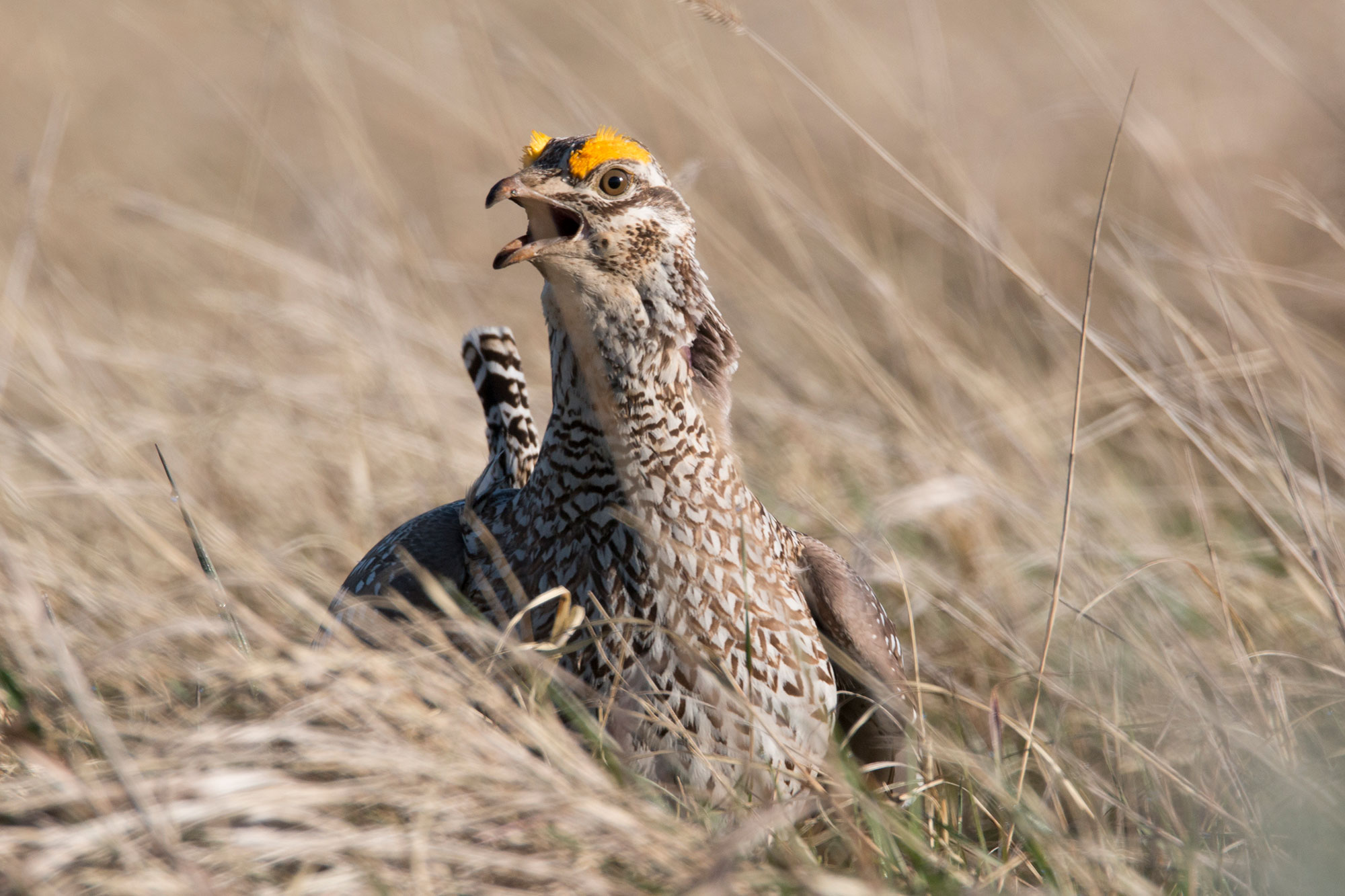
Native sharp-tailed grouse.
Hunters can help in the effort to manage upland game birds in the state, by collecting feathers from harvested birds and sending in wing envelopes.
Birds included in the North Dakota Game and Fish Department’s upland game wing survey, which has been in practice for decades, are ring-necked pheasants, sharp-tailed grouse, Hungarian partridge, turkeys and ruffed grouse.
Collecting enough pheasant samples is typically never a problem, but securing enough sharptail and partridge feathers can be.
Game and Fish biologists will take as many sharptail and partridge feathers as they can get because the more collected, the better the data.
Biologists can determine sex and age ratios from wings and tail feathers, survival, nesting success, hatch dates and overall production.
What biologists learn from the samples is vital to helping manage North Dakota’s upland game birds.
Hunters interested in receiving wing envelopes can request them online, or contact the Department’s main office in Bismarck by phone (701-328-6300) or email (ndgf@nd.gov).
Hunters can also get wing envelopes at Game and Fish District offices in Devils Lake, Jamestown, Riverdale, Dickinson, Williston and Lonetree Wildlife Management Area near Harvey.
Equipment on Wildlife Management Areas
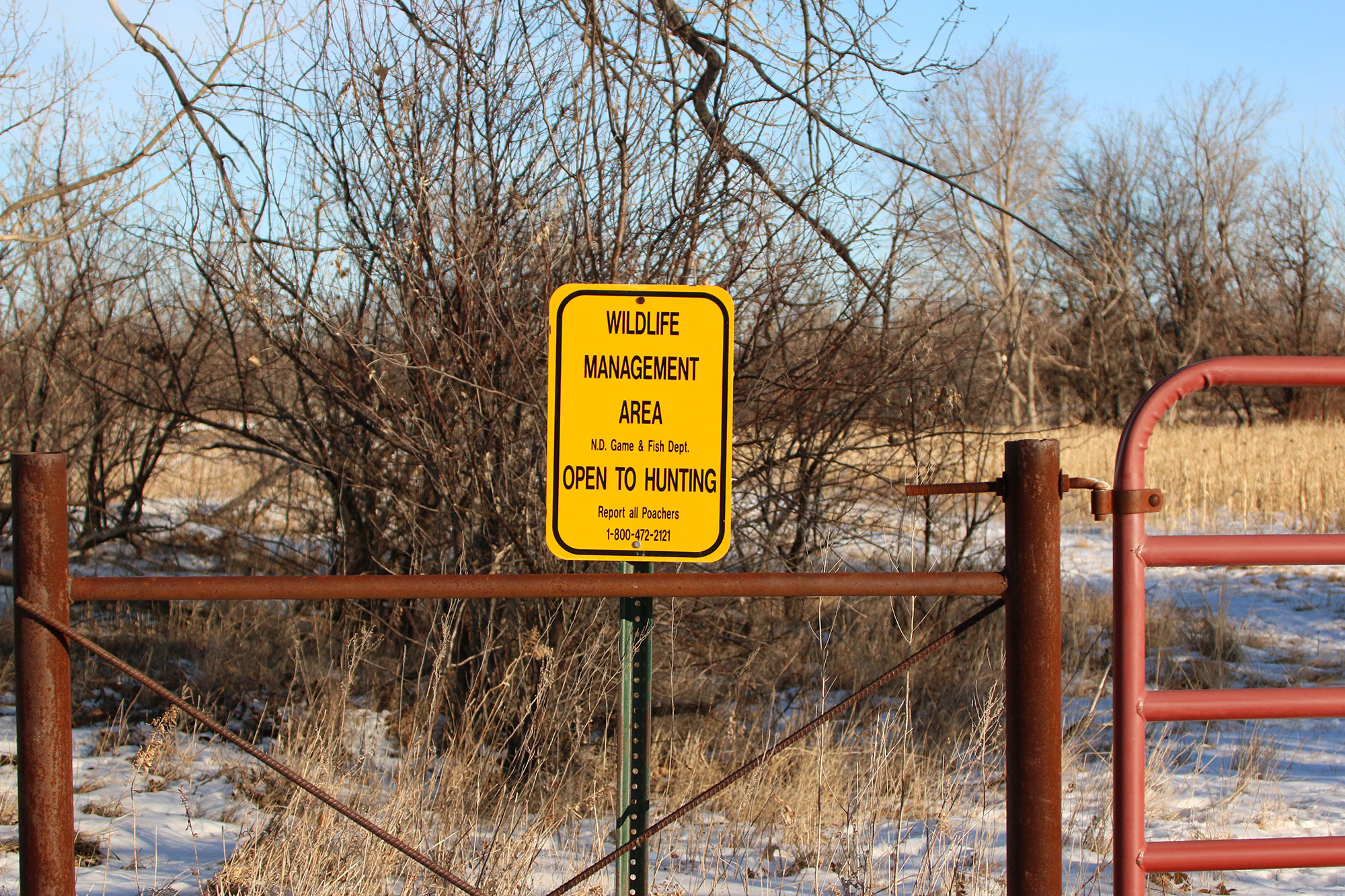
The North Dakota Game and Fish Department reminds hunters that tree stands, ground blinds and game cameras cannot be placed on state wildlife management areas prior to August 20.
Equipment set out prior to that date, or left on a WMA after January 31 is considered abandoned property and is subject to removal.
In addition, an equipment registration number, or the owner’s name, address and telephone number, must be displayed on all equipment requiring identification.
Owners can generate an equipment registration number by visiting My Account at the Game and Fish website. One registration number will be issued that can be used on all equipment that requires identification.
Walleye Fingerlings Stocked
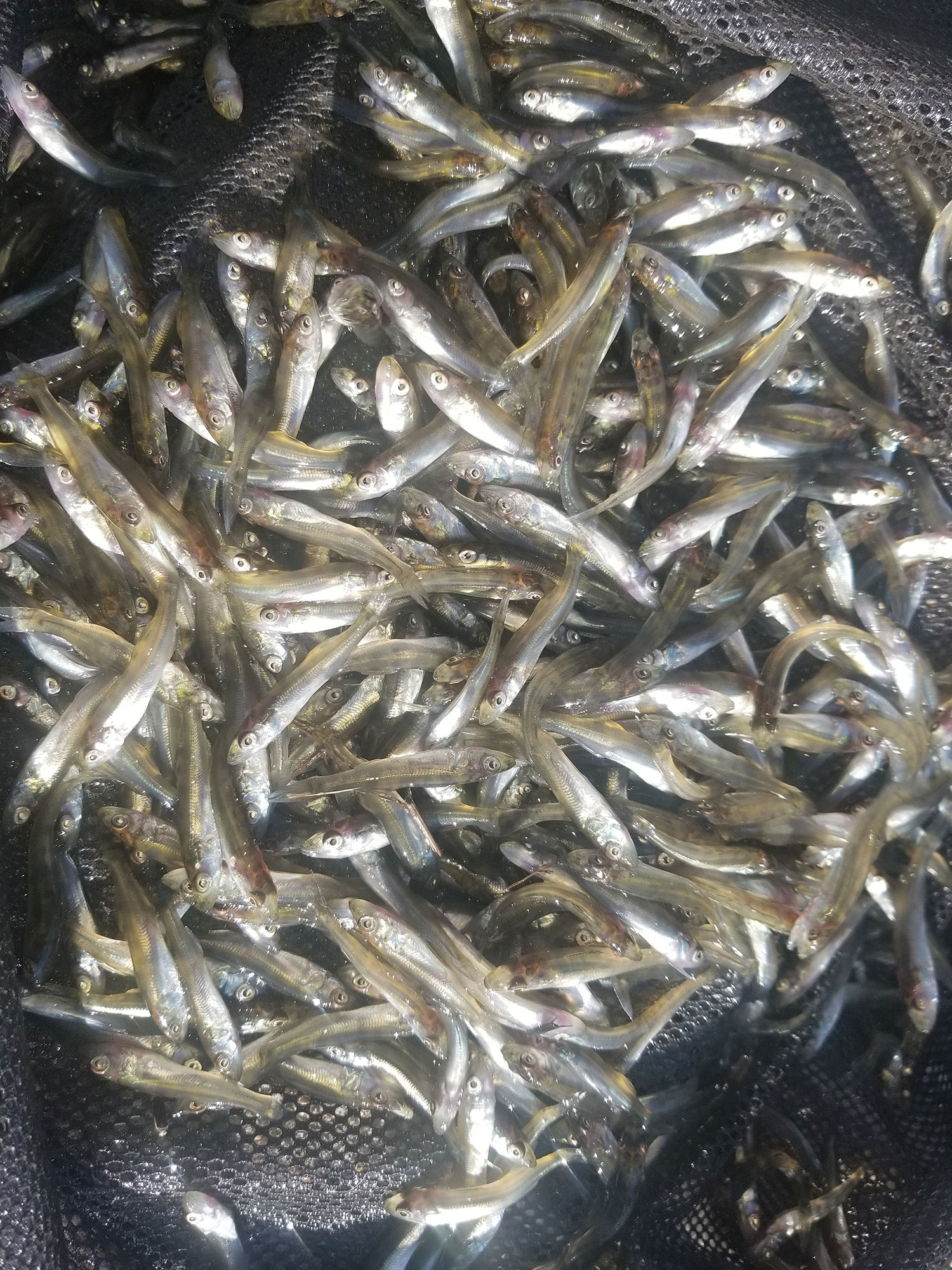
Walleye fingerlings
North Dakota Game and Fish Department fisheries personnel stocked more than 140 lakes across the state in summer with walleye fingerlings, completing one of the largest stocking efforts in the history of the agency. This included more than 11.3 million fingerlings from Garrison Dam National Fish Hatchery, besting the previous record walleye production by nearly 1 million fish.
Jerry Weigel, Department fisheries production and development section leader, said a big year was needed from the Garrison Dam Hatchery.
“They had to make up for the production that couldn’t be used out of the Valley City National Fish Hatchery due to the zebra mussel discovery in Lake Ashtabula, which is the water source for the Valley City Hatchery,” Weigel said.
Walleyes were already in production at Valley City when it was decided to only use those for stocking Lake Ashtabula. Some Valley City walleye fingerlings were also sent to other states for use in lakes where zebra mussels already exist.
“This was done out of caution until more is known about the zebra mussels in Ashtabula,” Weigel said.
Getting fish back into lakes that suffered winterkill was a priority this year, along with keeping up with the growing number of walleye fishing lakes in North Dakota.
“The condition of the receiving waters could not have been better, with cool temperatures and a lot of newly flooded vegetation, which makes for excellent survival conditions for fingerlings,” Weigel said. “The combination of an amazing walleye production effort and lots of water across the state bodes well for continued great walleye fishing in the future.”
The number of acres of production ponds at both hatcheries has remained unchanged in more than 30 years, yet Weigel said hatchery staff continue to find ways to produce more each year when requested.
“This is a testament to the dedicated and experienced staff at both hatcheries in the state,” he said.
Photo Contest Deadline Nears
The North Dakota Game and Fish Department’s Watchable Wildlife Photo Contest guidelines are the same as in previous years, but the process for submitting photos has changed.
Photographers who want to submit photos to the contest will now go the Department’s website. Then it is a matter of providing some pertinent information about the photo and uploading it.
The changes were put in place to help both with ease of submitting photos for the photographer and managing those images for Department staff.
The contest is now open and the deadline for submitting photos is October 1. For more information or questions, contact Patrick Isakson, Department conservation biologist, at pisakson@nd.gov.
The contest has categories for nongame and game species, as well as plants/insects. An overall winning photograph will be chosen, with the number of place winners in each category determined by the number of qualified entries.
Contestants are limited to no more than five entries. Photos must have been taken in North Dakota.
By submitting an entry, photographers grant permission to Game and Fish to publish winning photographs in North Dakota OUTDOORS, and on the Department’s website.
HIP Registration Required
Migratory bird hunters of all ages are reminded to register with the Harvest Information Program prior to hunting ducks, geese, swans, mergansers, coots, cranes, snipe, doves and woodcock. Hunters must register in each state they are licensed to hunt.
Hunters can HIP certify when purchasing a license – or by clicking the Migratory Bird HIP link – on the Buy and Apply page. In addition, hunters can call 888-634-4798 and record the HIP number on their printed license.
Those who registered to hunt the spring light goose season in North Dakota do not have to register with HIP again, as it is required only once per year.
HIP registration is a cooperative program designed to determine a sample of hunters from which to measure the harvest of migratory birds for management purposes.
Report Banded Birds
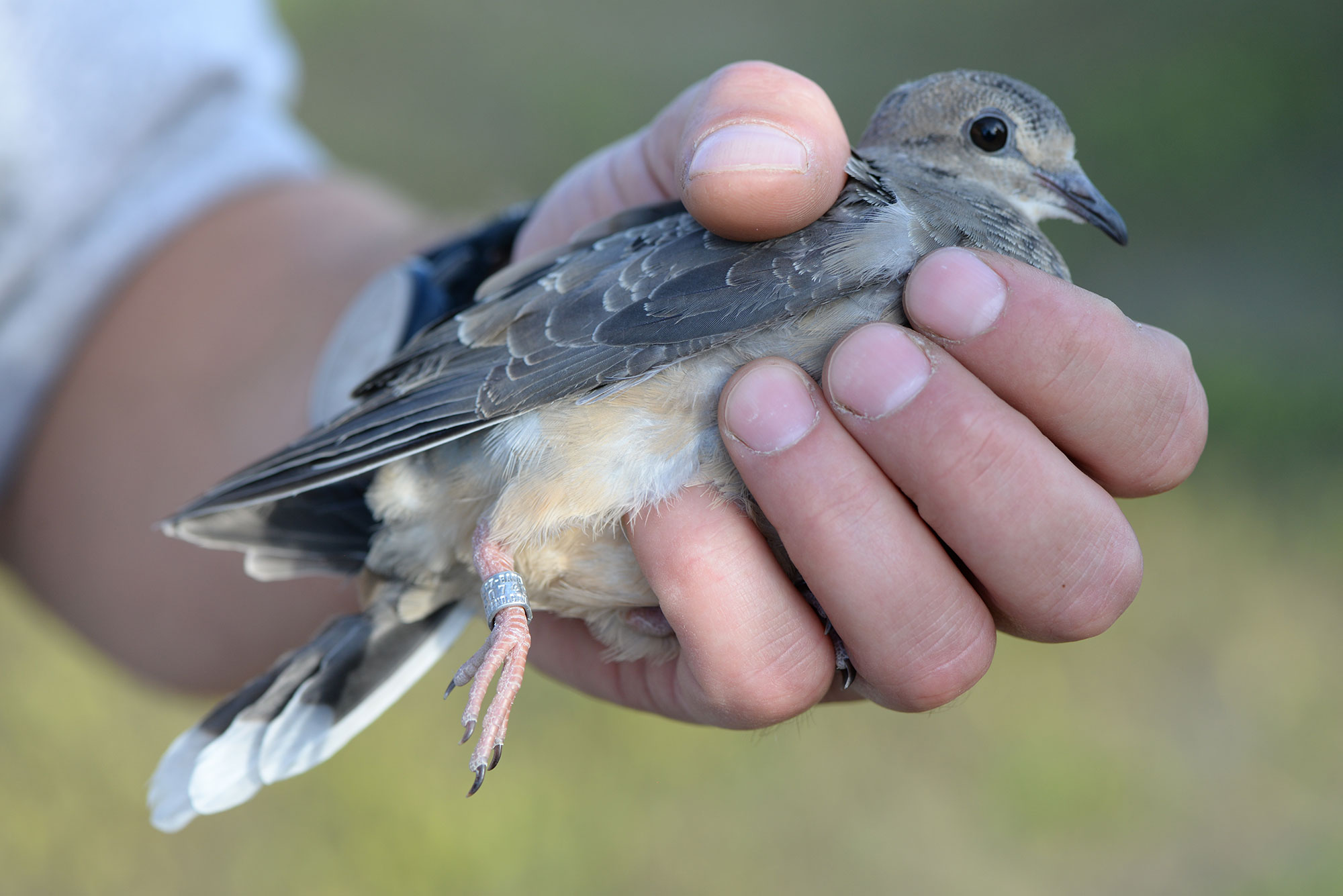
Hunters are reminded to check harvested migratory birds for bands this fall and report federal bands at reportband.gov.
In addition, the bird banding lab has a mobile friendly reporting site that will aid hunters to report bands via mobile devices.
The band number, date and location of each recovery are needed. After the band information is processed, hunters can request a certificate of appreciation, and information about the bird will be returned in an email. Hunters can keep all bands they recover. Information received from hunters is critical for management of migratory game birds.
Hunting, Trapping Guide
Hunters and trappers can find the North Dakota 2019-20 Hunting and Trapping Guide, which includes upland game, migratory game bird and furbearer hunting/trapping regulations and other information, online. Printed guides are available at the usual license vendor locations.
The 50-plus page guide also features a colored duck identification guide, aquatic nuisance species information, Tom Roster’s Nontoxic Shot Lethality Table and more.
Sandhill Crane Permits
North Dakota’s sandhill crane season opens September 14 and continues through November 10.
In addition to other licenses required, resident hunters need a $10 crane permit, while nonresidents need a $30 permit. Hunters can apply online. Harvest Information Program certification is required.
Hunters can also send the permit fee, along with personal information, including height, weight, social security number, date of birth, color of hair and eyes, and hunter education number and state issued, to Crane Permit, NDGF, 100 N. Bismarck Expressway, Bismarck, ND 58501.
Federal Duck Stamp Required
A federal duck stamp is required for waterfowl hunters age 16 and older beginning September 1. Waterfowl includes ducks, geese, swans, mergansers and coots.
This year’s 2019-20 federal duck stamp is available for electronic purchase online, instant licensing telephone number, 800-406-6409, or at license vendors registered with the Department’s licensing system.
Physical stamps are not available at North Dakota license vendors, but they can still be purchased at many U.S. Postal Service offices.
The electronic stamp is a purchase item like any other hunting or fishing license. When the purchase is completed the electronic stamp is valid immediately. The words "Federal Duck Stamp" will be printed on the license certificate, along with an expiration date 45 days from the date of purchase. The actual physical stamp will be sent by postal mail.
The physical stamp is processed and sent by the official duck stamp vendor in Texas, and should arrive to the individual buyer well before the expiration date printed on the electronic license. The physical stamp must remain in possession of the hunter after the 45-day electronic stamp has expired. The federal duck stamp has a fee of $25. An additional $1.50 fee is added to cover shipping and handling costs of the actual physical stamp.
More High School Clay Target Championship Results
What follows are the results of the novice and junior varsity divisions for both girls and boys at the North Dakota State High School Clay Target League state championship held earlier in summer at The Shooting Park in Horace. Results of the top finishers in the varsity divisions were published in the July issue of North Dakota OUTDOORS.
Class 1A Novice Girls – Kaitlin Slaubaugh, Wolford High School, 82; Blake Miller, Richland High School, 79; and Maycee Bolgrean, Central Cass High School, 77.
Class1A Novice Boys – Cole Boyd, Dakota Prairie High School, 87; Braeden Volk, Mohall-Lansford High School, 86; and Luke Reinhart, Dakota Prairie High School, 84.
Class 1A Novice Team – Dakota Prairie High School, first place; Barnes County High School, second place; and Richland High School, third place.
Class 1A Jr. Varsity Girls – Halle Dunlop, Century High School, 91; Josie Hajek, Sargent Central High School, 87; and Alizabeth Krick, Century High School, 83.
Class 1A Jr. Varsity Boys – Preston Mitzel, Century High School, 93; Dylan Jost, Wahpeton High School, 91; and Tyler Guscette, Barnes County North High School, 90.
Class 1A Jr. Varsity Team – Century High School, first place; Wahpeton High School, second place; and Barnes County North High School, third place.
Class 2A Novice Girls – Veronica Miller, Kindred High School, 76; Kylee Greuel, Kindred High School, 73; and Caitlyn Thoreson, Valley City High School, 70.
Class 2A Novice Boys – William Gay, Sheyenne High School, 83; Mason Brew, Mandan High School, 82; and Calahan Burchill, Valley City High School, 81.
Class 2A Novice Team – Valley City High School, first place; Mandan High School, second place; and Fargo North High School, third place.
Class 2A Jr. Varsity Girls – Samantha Bauer, Legacy High School, 88; Sydney Steffen, Devils Lake High School, 87; and Makaelyn Lorenz, Valley City High School, 86.
Class 2A Jr. Varsity Boys – Bryce Brendel, Mandan High School, 92; Derek Bear, Valley City High School, 91; and Connor Johnson, South Prairie High School, 90.
Class 2A Jr. Varsity Team – Valley City High School, first place; Legacy High School, second place; and Mandan High School, third place.
Devils Lake Access Committee Recognized
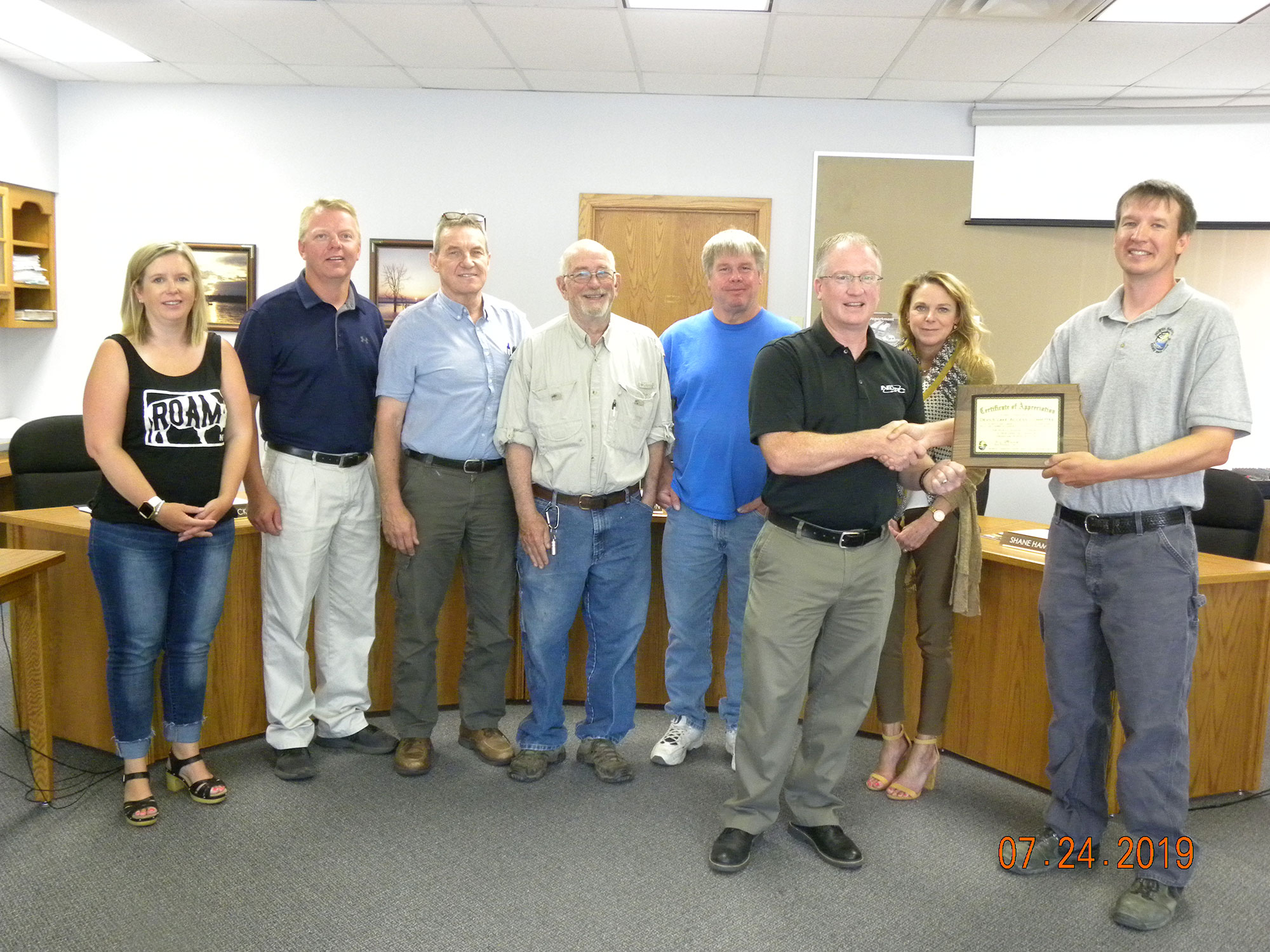
Pictured from left to right: Suzie Kenner, Devils Lake Tourism; Mike Grafsgaard, city of Devils Lake; Terry Wallace, Devils Lake Park Board; Bob Gibson, Lake Region Anglers Association; Mark Olson, Ramsey County Commission; Jamie Beck, Devils Lake Park Board; Paula Vistad, Devils Lake Chamber of Commerce; and Todd Caspers, North Dakota Game and Fish Department.
The North Dakota Game and Fish Department honored the Devils Lake Access Committee for its ongoing efforts to develop and maintain public use facilities at numerous lake and recreation areas.
The committee was recognized for its construction of boat ramps, courtesy docks, fishing piers, fish cleaning stations, and roads and parking areas at many sites, including Estenson’s Landing, Lakewood, Schwab Landing, Pelican Lake, Henegar Landing, Channel A and Four Seasons.
The access committee includes the city of Devils Lake, Devils Lake Chamber of Commerce, Devils Lake Park Board, Ramsey County Commission and Lake Region Anglers Association.
The Game and Fish Department’s fisheries division annually presents a “Certificate of Appreciation” to an organization that has signed on as a cooperating partner in local projects.
